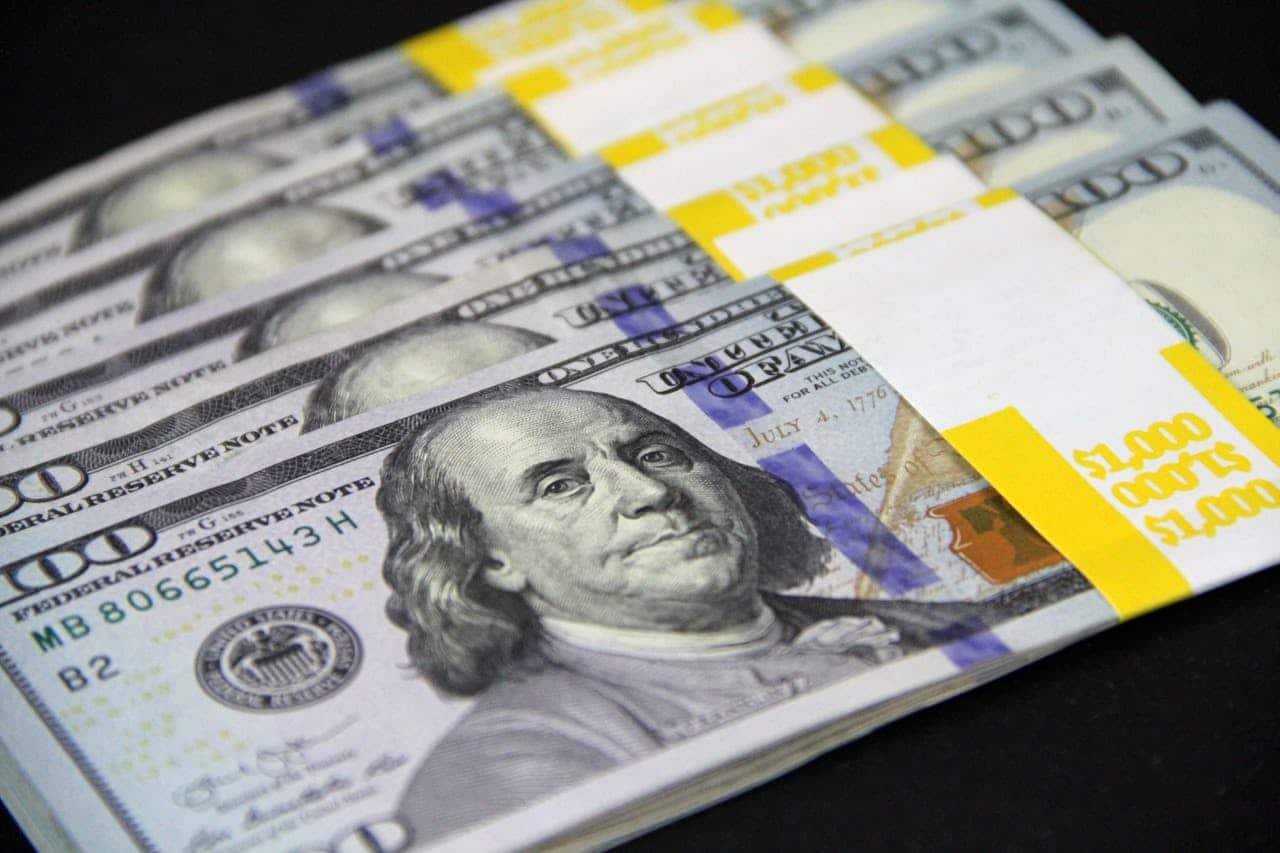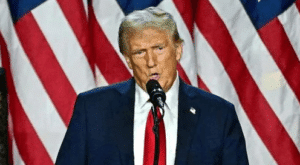With Donald Trump’s return to the White House, the financial landscape faces a potential transformation that could ripple across the U.S. economy and the globe. His campaign promises—focused on tax cuts, immigration restrictions, and hefty tariffs on imports—have sparked debate and speculation on their inflationary impact and potential to keep interest rates elevated. This article delves into Trump’s economic plan and its likely effects, exploring whether his policies will indeed usher in higher inflation, sustained interest rates, and broader economic implications.
1. Trump’s Proposed Economic Policies: An Overview
- Tax Cuts: Significant reductions in corporate and personal taxes.
- Trade Tariffs: Increased tariffs on imported goods, with targets including China and Mexico.
- Immigration Crackdown: Stricter immigration policies with potential deportations.
These policies could boost domestic production and employment but are equally likely to stoke inflationary pressures. With the U.S. Senate aligned with Trump, the likelihood of passing these measures remains high.
| Policy | Description | Potential Economic Impact |
|---|---|---|
| Tax Cuts | Reduction in corporate and individual tax rates | Increased consumer spending, potential inflation rise |
| Trade Tariffs | High tariffs on imports from countries like China, Mexico | Higher prices on imports, inflationary pressure |
| Immigration | Stricter immigration laws, potential deportations | Labor shortages, higher wages, possible inflation |
2. Impact on Inflation
Trump’s policies are widely expected to push inflation upwards due to:
- Increased Consumer Spending: Lower taxes could lead to more disposable income, resulting in higher consumer demand, which can drive prices up.
- Higher Import Prices: Imposing tariffs, especially on essential goods, could raise costs for U.S. consumers and manufacturers reliant on imported raw materials.
- Labor Shortages and Wage Pressure: Immigration restrictions may reduce the labor supply, especially in industries that depend heavily on immigrant workers, thereby pushing wages higher.
In the short term, this could mean inflation climbs faster than the Federal Reserve’s 2% target, pushing the central bank to maintain elevated interest rates.
3. Effects on Interest Rates and the Federal Reserve’s Response
Trump’s policies could have an indirect yet significant impact on Federal Reserve policy:
- Limited Rate Cuts: Higher inflation expectations may force the Fed to either pause rate cuts or implement hikes to prevent the economy from overheating.
- Dollar Strength: Higher interest rates attract foreign investors, which would likely strengthen the U.S. dollar, thereby impacting U.S. exports and potentially driving inflation higher for other countries using the dollar as a trade currency.
Data Table: Federal Reserve Rate Changes and Projected Economic Effects
| Year | Fed Rate (%) | Inflation Rate (%) | Economic Growth (%) | U.S. Dollar Index |
|---|---|---|---|---|
| 2023 (Actual) | 5.25 | 3.2 | 2.1 | 105.7 |
| 2024 (Projected) | 5.5 | 3.5 – 4.0 | 2.0 | 110.0 |
| 2025 (Projected) | 5.25 – 5.5 | 3.0 | 1.8 | 109.5 |
4. Trade Tariffs and Their Global Impact
Trump’s proposal includes tariffs of 10–20% on imports, with higher rates of up to 60% on Chinese goods and potentially even steeper tariffs on Mexican-made products. These tariffs act as a “tax” on imported goods, raising their prices and impacting both consumers and businesses.
Implications of Tariffs:
- Domestic Price Increases: Higher import costs could translate to more expensive goods, thus impacting American consumers directly.
- Global Inflation: If countries retaliate with tariffs of their own, it could create a global inflation wave, especially if countries like China and the European Union respond in kind.
Economic Insight: Tariffs, while aiming to support domestic industries, could result in decreased economic output and higher prices across the board. For instance, a 20% tariff could reduce demand for imported goods, but would simultaneously raise the cost of manufacturing in the U.S., as many industries rely on imported components.
5. Sector-Specific Impacts: Who Stands to Gain or Lose?
Certain sectors may benefit, while others could face setbacks.
| Sector | Expected Impact |
|---|---|
| Manufacturing | Benefited by reduced import competition but faces higher input costs |
| Retail | Increased costs due to tariffs on imported goods, potential for lower demand |
| Agriculture | Possible retaliation tariffs from trade partners, leading to export issues |
| Technology | Dependency on foreign parts could raise production costs |
| Automotive | Significant impacts from tariffs on parts; may face increased consumer prices |
6. Labor Market and Immigration Policy Implications
Trump’s restrictive immigration stance may have complex effects on the U.S. labor market:
- Wage Inflation: Reduced labor availability may drive wages up, especially in sectors like agriculture, construction, and hospitality.
- Lower Workforce Participation: With fewer immigrant workers, sectors dependent on this labor may face reduced workforce participation rates, increasing wage pressures.
This wage increase, while beneficial for workers, could contribute to inflationary pressures that further encourage the Fed to maintain or even increase interest rates.
7. International Relations and Trade Policies
Trump’s “America First” approach may strain international relations, especially with trade-heavy allies:
- Canada and Mexico: These countries could face tariffs that would significantly impact their economies due to reliance on U.S. exports.
- China and the European Union: Tensions may rise if Trump enforces tariffs, particularly with China, where a 60% tariff could reduce China’s GDP by 0.5 to 0.8 percentage points.
Retaliation could trigger a broader trade war, which could disrupt global trade, increase inflation rates, and result in economic stagnation.
8. Potential Scenarios: A Look Ahead
Given Trump’s economic approach, several potential scenarios could unfold:
- Scenario 1: A protracted trade war resulting in widespread inflation, leading to sustained high interest rates.
- Scenario 2: Immigration policies that create labor shortages, pushing wages and consumer prices higher.
- Scenario 3: Increased U.S. production but higher overall costs, resulting in a balanced economy with sustained inflation but moderate growth.
Data Table: Scenario-Based Economic Projections
| Scenario | Inflation Rate (%) | Fed Rate (%) | Economic Growth (%) | Dollar Index |
|---|---|---|---|---|
| Scenario 1: Trade War | 4.5 – 5.0 | 5.5 – 6.0 | 1.5 | 111.5 |
| Scenario 2: Labor Shortage | 3.5 – 4.0 | 5.25 – 5.5 | 1.8 | 110.0 |
| Scenario 3: Balanced Growth | 3.0 | 5.0 | 2.2 | 109.0 |
9. The Long-Term Impact of Trump’s Economic Policies
Trump’s economic plan could indeed lead to heightened inflation and sustained high interest rates, especially if the U.S. sees continued upward pressure on prices from tariffs, wage increases, and restricted trade. Higher interest rates, a robust dollar, and inflation risks all stand to shape a volatile economic environment for the U.S. and its trading partners.
If fully realized, Trump’s policies may initially bolster American industry but at the expense of higher consumer costs and potential economic strain for global allies. As the world braces for potential economic ripples, investors, businesses, and consumers must prepare for a period marked by uncertainty, inflation, and high interest rates.



